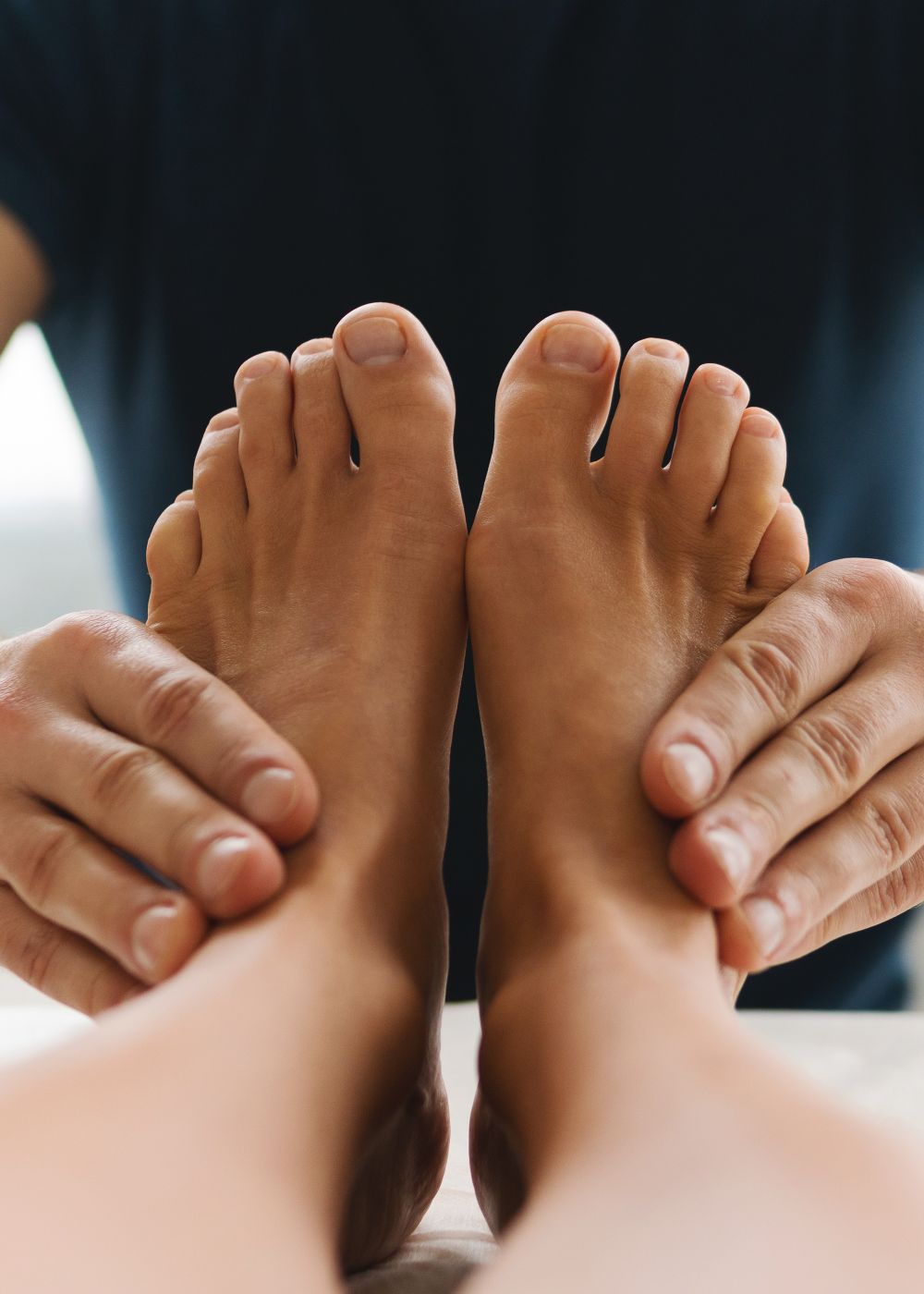Diabetes And Your Feet
In New York City
According to the American Diabetes Association, over 37.3 million people (11.3% of the United States population) have diabetes. Nervous system damage (also called neuropathy) affects about 60 to 70 percent of people with diabetes, causing people with diabetes to lose feeling in their feet or hands.
Foot problems are a huge risk for diabetics. Diabetics must constantly monitor their feet for changes. If these are ignored, they face severe consequences, including amputation.
Common Problems

What Are Some Common Foot Problems for People With Diabetes?
With a diabetic foot, a wound such as a small blister from wearing a tight, ill-fitting shoe can cause a lot of damage. As a part of the disease, diabetes decreases blood flow to the extremities causing simple injuries to heal more slowly. When a wound does not heal in a normal amount of time, it places you at a greater risk for infection.
As a diabetic, you are inherently immune-suppressed, causing your infections to spread more rapidly. If you have diabetes, you should inspect your feet every day. Look for puncture wounds, bruises, pressure areas, redness, warmth, blisters, ulcers, scratches, cuts, and nail problems. If you cannot see the bottom of your feet due to arthritis or obesity, you MUST get someone to help you or use a mirror.
Call Chelsea Foot and Ankle at (646) 929-4149 in New York City for diabetic foot care.
How Can I Care for My Feet if I Have Diabetes?
- Try to keep your feet warm.
- Don’t get your feet wet in snow or rain.
- Don’t put your feet on radiators or in front of the fireplace.
- Don’t smoke or sit cross-legged. Both dramatically decrease the blood supply to your feet.
- Don’t soak your feet.
- Don’t use antiseptic solutions, drugstore medications, heating pads, or sharp instruments on your feet.
- Trim your toenails straight across. Avoid cutting the corners.
- Use a nail file or emery board. If you find an ingrown toenail, contact our office. Do not attempt to cut this yourself.
- Use quality lotion to keep the skin of your feet soft and moist, but don’t put any lotion between your toes.
- Wash your feet every day with mild soap and warm water and dry them well afterward.
- Wear loose socks to bed.
- Wear warm socks and shoes in winter.
- When drying your feet, pat each foot with a towel and be careful between your toes.
- Use your hands to inspect the inside of each shoe before putting it on. Shake the shoe to remove any debris or items that may have gotten in (such as loose change or a pebble.
- Don’t lace your shoes too tightly or loosely.
- Choose socks and stockings carefully. Wear clean, dry socks every day. Avoid socks with holes or wrinkles. Thin cotton socks are more absorbent for summer wear. Square-toes socks will not squeeze your toes. Avoid stockings with elastic tops.
Potential Problems

What Diabetic Foot Problems Am I At Risk For?
If your feet become numb from diabetes, they are at risk of becoming deformed. One way this happens is through a loss of protective sensation. You walk on pressure points that normally would hurt, signaling you to stop walking on the painful bony prominence. If you have diabetic neuropathy and don’t regularly check your feet, these pressure points can eventually break through the skin and cause ulcers or open sores. Often, these may become infected. Another way your feet may become deformed in diabetes is a bone condition called Charcot (pronounced “sharko”) foot. This is one of the most serious foot problems you can face as a diabetic. It warps the shape of your foot by causing your bones to fracture and disintegrate, yet you continue to walk on it because you don’t feel it. Diabetic foot ulcers and the early phases of Charcot fractures can be treated successfully and managed by several conservative (non-surgical) modalities.
Why Choose Chelsea Foot and Ankle to Treat Diabetic Foot Problems?
Dr. Ethan J. Ciment has extensive skill and experience in treating diabetic foot problems. Your care will be individualized, thorough, and always handled with your best interest in mind.
Our team respects our patients and values their time. Choosing Chelsea Foot and Ankle as your provider means you can expect to be treated like family and the VIP you are. Because of our commitment to our patients, we offer comprehensive care at reasonable prices with a friendly staff ready to help with any questions or billing issues.
Risk

How Will I Know If I’m at Risk for Neuropathy?
Symptoms of neuropathy or nerve damage include pain, tingling, numbness, or a burning sensation. Nerve damage can also lower your ability to feel pain, heat, or cold. A loss of sensation can make you more susceptible to a foot injury, as you might not notice cuts or sores.
Anyone with diabetes can develop nerve damage, but there are ways to mitigate your risks.
- Quit smoking, as smoke reduces blood flow and circulation.
- Maintain a healthy, diabetic-friendly diet.
- Stay active to increase circulation and keep a healthy weight.
- Always follow the instructions of your doctor.
Do I Need Diabetic Shoes?
In most cases — yes. Diabetic shoes are specifically designed for people with diabetes. Their unique shape and design protect your feet from injury and irritation. Diabetic shoes are often more lightweight than other shoes, which improves mobility and comfort.
When shopping for diabetic shoes, keep these features in mind:
- Leather, suede, or other flexible materials
- A lightweight, breathable structure
- Cushioned or shock-absorbing soles
- Laces that can easily be loosened or tightened to account for swelling
Additionally, be sure to pay attention to the fit of your shoes. Ill-fitting shoes can be dangerous and cause additional irritation or injury.
New York City Diabetic Foot Care
Our experienced doctors at Chelsea Foot and Ankle know the importance of foot care with diabetes. You can rest assured that your care comes first.
We also treat the following conditions:
Many of these concerns may coincide with foot problems associated with diabetes. If you encounter any of these symptoms, be sure to contact your podiatrist as soon as possible.
Diabetic Foot Care FAQ
How often should I see my podiatrist if I have diabetes?
It depends on your overall health and current status. If you have good circulation and no neuropathy, you should be fine with annual visits; however, having your feet checked for any injuries during your routine check-ups with your primary care physician is also a good idea. If you suffer from neuropathy, seeing your podiatrist every two to three months is best.
Which diabetic foot symptoms should I watch for?
If you experience any new foot concern, such as tingling or burning, changes in the shape or color of your feet, pain in your legs or lower body, a loss of sensation, or any infections or injuries, be sure to make an appointment with your podiatrist as soon as possible.
What types of physical activities are safe for people with diabetes?
Swimming, biking, and walking are all great options for staying active. Always wear proper footwear and check your feet after any physical activity.
What is the best way to prevent foot problems with diabetes?
It’s possible for people with diabetes to prevent major foot complications. Monitoring your feet for injuries, maintaining proper hygiene, taking preventative precautions like wearing proper footwear, and seeing your podiatrist regularly will greatly improve your ability to have healthy, happy feet!
If your feet become numb from diabetes, they are at risk for becoming deformed. One way this happens is through a loss of protective sensation. You walk on pressure points that normally would hurt, signaling you to stop walking on the painful bony prominence. If you have diabetic neuropathy and you don’t regularly check your feet, these pressure points can eventually break through the skin and cause ulcers, or open sores. Often, these may become infected. Another way your feet may become deformed in diabetes is a bone condition called Charcot (pronounced “sharko”) foot. This is one of the most serious foot problems you can face as a diabetic. It warps the shape of your foot by causing your bones to fracture and disintegrate, yet you continue to walk on it because you don’t feel it. Diabetic foot ulcers and the early phases of Charcot fractures can be treated successfully managed by a number of conservative (non-surgical) modalities.
If you are seeking treatment for foot problems due to diabetes in central New York City, call our office today at (646) 929-4149!
Don’t forget to check out our blog and patient testimonials to learn more about us!
We always put our best foot forward…so you can too!
Our Patients Love Us
An absolutely amazing experience. Dr. Ciment is an absolutely wonderful person – it is very evident that he truly cares about his patients.
What a pleasure to meet Dr. Shastri. She was extremely personable, listened intently and actually was able to treat my condition to a fair extent in the first sitting.
Highly recommend her.
